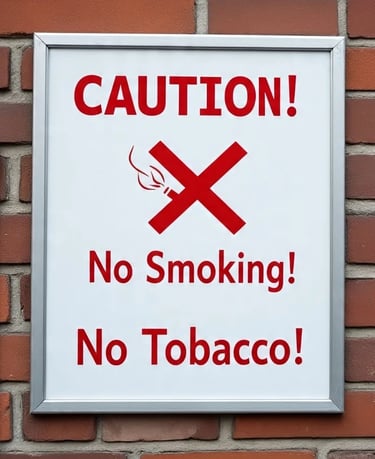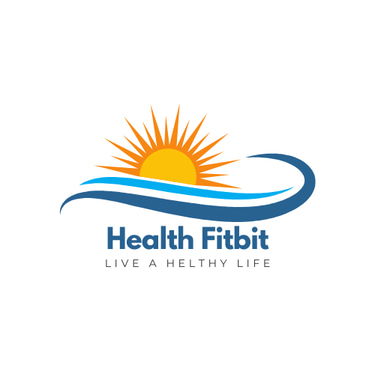How to Quit Tobacco Permanently: Health Risks, Effects & Proven Steps
Learn the hidden dangers of tobacco use, how it harms your body and mind, and follow proven steps to quit smoking or chewing tobacco permanently for a healthier life.
HEALTH & AWARNESS
Tapas Kumar Basu
7/29/20256 min read


You know that tobacco comes from a plant called Nicotiana, and its leaves contain a chemical called nicotine. But did you know that tobacco kills more than 7 million people every year including around 1.6 million innocent non-smokers exposed to secondhand smoke? This shocking reality comes straight from a recent World Health Organization (WHO) report and it’s a wake-up call the world desperately needs. This guide will show you the dangers of tobacco and help you quit for good, so you can reclaim your health and freedom.
How Tobacco Takes You in Its Grip
The chemical, nicotine found in Tobacco is highly addictive. It makes people easily addicted. Many people start using it innocently, influenced by family, friends, or society. At first, it feels nice. But slowly, people start using it more and more for relief from anxiety, work stress, or mental unrest. Before long, tobacco becomes a strong addiction, taking control of their lives. This is how tobacco traps people.
When you smoke, chew, or use tobacco in any form, including cigarettes, cigars, hookah, gutkha, khaini, snuff, nicotine pouches, and e-liquids in vapes, nicotine goes to your brain very fast. It makes you feel relaxed for a short time. But when the nicotine level drops, your brain wants more. So you reach for another cigarette, pouch, or hookah session. This cycle keeps going. You are not using tobacco for fun anymore; you want to become normal you are in a trap of Tobacco. This is called Tobacco addiction — a hard habit to break.
How Secondhand Smoke Endangers Innocent Lives
The smoke from burning tobacco products like cigarettes, cigars, hookahs, or pipes is called passive smoking, also known as secondhand smoke. When you smoke or use tobacco, people near you are exposed to toxic chemicals, which increases their risk of respiratory problems, heart disease, lung cancer, and other serious health issues. This secondhand smoke is especially harmful to children, pregnant women, and people with pre-existing health conditions. Not only does it damage their health, but children who grow up around smokers are also more likely to start using tobacco themselves at an early age. I have witnessed this firsthand.
The Physical Impact of Tobacco Addiction
Tobacco products don't just contain addictive nicotine; they also have thousands of other chemicals, many of which are poisons and cause cancer. This mix means tobacco directly affects almost every part of your body, leading to serious health problems.
Cardiovascular System: Your heart works tirelessly, but tobacco puts it under intense strain. Nicotine rapidly speeds up your heart rate and raises blood pressure. Other tobacco chemicals also squeeze your blood vessels, making it harder for blood to flow. This constant strain and damage dramatically raise your risk of heart attack, stroke, and peripheral artery disease (PAD).
Respiratory System: Tobacco chemicals harm your lungs and airways, causing Chronic Obstructive Pulmonary Disease (COPD), which includes conditions like chronic bronchitis and emphysema. This damage makes it harder to breathe and increases the risk of infections.
Digestive System: Tobacco use can cause stomach and intestinal problems, including nausea, vomiting, diarrhea, peptic ulcers and acid reflux.
Oral Health: Regular tobacco use can harm your mouth, causing gum disease, tooth decay, staining, bad breath, and increasing the risk of oral cancer.
Reproductive Health: Tobacco use can harm reproductive health in men and women, reducing fertility and increasing pregnancy risks like premature birth, low birth weight, birth defects, and even infant death.
Cancer Risks: Tobacco use is a leading cause of cancer and cancer deaths worldwide. With thousands of harmful chemicals, it increases cancer risk in nearly every part of the body.




The Psychological Effects of Tobacco Addiction
Beyond physical sickness, tobacco casts a long shadow over your mental and emotional well-being. While many believe tobacco helps with stress, the truth is often the opposite; its nicotine addiction creates a cycle that actually increases anxiety and mood swings.
Mood: Tobacco's nicotine gives a temporary dopamine boost that feels calming. But it's short-lived. As nicotine levels drop, withdrawal symptoms like increased stress, anxiety, depression, irritability, and restlessness kick in, pushing you to use tobacco again.
Cognitive Function: During withdrawal, users often experience disruption in cognitive processes, such as: brain fog, trouble in focusing, and poor memory. For teenagers, whose brains are still growing, nicotine from tobacco products can harm attention, learning, and self-control.
Sleep: Nicotine is a stimulant. Using tobacco, especially before bed, can disrupt healthy sleep patterns, leading to insomnia or restless nights.
Self-Control: The mental burden of addiction is huge. Constant cravings, planning your day around tobacco, and worrying about running out can take up a lot of mental energy. This loss of self-control can lead to feelings of shame, guilt, and helplessness, trapping you further.
Tobacco-Free Life: Of Course, You Can Do It!
Begin Your Journey to a Tobacco-Free Life. Being free from tobacco addiction, you’ll be able to breathe easier, feel healthier, and live longer.
Quitting tobacco might seem impossible at first, but it's totally achievable. Millions have done it, and you can too! This requires willpower and a supported plan to tackle both nicotine addiction and your daily habits.
Step 1. Decide and Commit:
Make a strong and clear decision to quit tobacco. Pick a specific day, ideally within two weeks, to stop using tobacco. Mark it and get ready.
Step 2. Get Professional Help: Consult your doctor for guidance to help you quit tobacco if needed.
Step 3. Build Coping Skills: Identify your tobacco triggers and replace them with healthy alternatives like walking, drinking water, practicing deep breathing, meditation, yoga, or engaging in a hobby.
Step 4. Handle Withdrawal Symptoms: Your body will react when you are quitting tobacco. You may feel irritable, anxious, hungry, or get headaches, and have strong cravings for it. Use managing skills, and it will get better with time.
Step 5. Build a Strong Support System: Tell family and friends about your decision to quit tobacco and ask for their support if you need it.
Step 6. Prevent Relapse: Relapse is common, but it doesn't mean that you've failed. If you slip, don't give up. Learn what triggered it, and get back on track right away. Even after initial withdrawal, continue practicing managing skills for staying tobacco-free.
Start today! The best time to quit was yesterday; the second-best time is now. Take charge of your health and happiness. Your future self will thank you for choosing a tobacco-free life and protecting those you love from the dangers of secondhand smoke!
References:
1. Centers for Disease Control and Prevention (CDC)
2. World Health Organization (WHO)
3. National Cancer Institute (NCI)
4. American Cancer Society (ACS)
Frequently Asked Questions (FAQs)
Q1: What are the health risks of tobacco use?
A: Tobacco use damages nearly every part of your body. It raises the risk of heart disease, stroke, lung diseases like COPD, digestive problems, gum disease, fertility issues, and several types of cancer.
Q2: How does nicotine make tobacco so addictive?
A: Nicotine quickly reaches your brain and triggers dopamine release, which creates a temporary feeling of pleasure or calm. This short-lived reward effect makes you crave more, trapping you in an addiction cycle.
Q3: Will I experience withdrawal symptoms after quitting tobacco?
A: Yes. You may feel headaches, irritable, anxious, restless, hungry, or sleep disturbances and strong cravings. These are normal and temporary — they usually pass within a few weeks.
Q4: How long do tobacco cravings last?
A: Cravings usually peak during the first few days to weeks after quitting. They get weaker gradually and often fade significantly within one to three months.
Q5: What happens to my body when I quit tobacco permanently?
A: After quitting, your blood pressure and heart rate return to normal, lung function improves, circulation gets better, your senses of taste and smell come back, and your risk of heart attack, stroke, and cancer steadily drops.
Q6: Can quitting tobacco reduce my risk of other diseases?
A: Absolutely! Quitting tobacco reduces the risk of heart disease, stroke, lung cancer, and other smoking-related diseases.
Q7: Does quitting tobacco really improve mental health?
A: Yes. Quitting breaks the stress cycle caused by nicotine withdrawal. Most people feel less anxious, sleep better, think more clearly, have a more positive outlook, and enjoy a more stable mood once they’re tobacco-free.
Q8: What’s the best way to quit tobacco for ever?
A: Combining strong willpower, professional medical support, and healthy habit changes gives you the best chance of quitting successfully.
Q9: How can I manage cravings and triggers?
A: Identify what triggers your urge to use tobacco — such as stress, anxiety, anger, depression, coffee, alcohol, or certain social situations — and replace these triggers with healthy actions like walking, drinking water, chewing sugar-free gum, practicing yoga, meditating, or doing deep breathing exercises.
Q10: Is it normal to relapse after quitting tobacco?
A: Yes. Many people relapse once or even several times before they quit for good. If you slip up, don’t give up — learn what triggered it and try again with new strategies.
Q11: Where can I find help to quit tobacco if it seems to me difficult?
A: Talk to your doctor first. You can also reach out to stop-smoking helplines, join support groups, use online programs, and access resources from trusted organizations like the CDC, WHO, and the American Cancer Society.
Explore fitness, meditation, and healthy living tips.
© 2025. All rights reserved.
